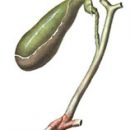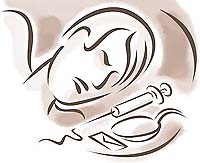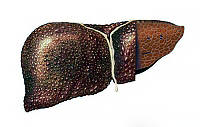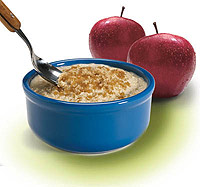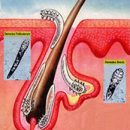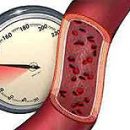The diagnosis and treatment of uncomplicated gallstone disease (HCB) is engaged in a gastroenterologist. The diagnosis can be installed on the basis of patient complaints and a number of additional research, and primarily the patient will make an ultrasound of the abdominal organs.
Content
In more complex cases, a radiographic study may be required with a preliminary administration of a contrast agent (through the mouth or intravenous) - cholecystocholangiography. The contrast agent can also be introduced directly into the bile ducts by puncture with a special thin needle (parcel-free cholangiography) or through an endoscope (endoscopic retrograde cholangiopancopyography or ERHP). The last procedure is a bit like gastroscopy.
During ERPHG, it is possible to remove fine stones from bile ducts.
Treatment of gallway disease
 Treat gall-eyed disease can be a therapeutically (without surgery) and surgically. As a rule, treatment starts with therapeutic methods.
Treat gall-eyed disease can be a therapeutically (without surgery) and surgically. As a rule, treatment starts with therapeutic methods.
Diet with gallway disease
- 4-6 one-time meals are recommended with the exception of oily, roasted, sharp, chocolate, carbonated drinks.
- Smoked meat, oily meat (lamb, pork), irritating seasonings, alcoholic beverages.
- Vegetable food and dairy products are recommended. It is useful to add wheat bran in food.
Dissolving stones in the bustling bubble with special preparations
The method is applied only in the case of single small (up to 2 cm) cholesterol (x-ray) stones, in the absence of contraindications. The course of treatment lasts 1-1.5 years. A few years later, more than half of the patients are formed stones. Extracorporeal shock wave lithotripsy — The destruction of the stones of the shock wave, which is created by special devices. Showing in the case of cholesterol stones with a diameter of up to 3 cm, no more than 3, with a sufficient contractile ability of the gallbladder. Stones are crushed into small pieces (sizes up to 1-2 mm) and independently come out of the body. The procedure is painless, well tolerated and can be carried out outpatient.
Surgery
It consists in removing the gallbladder, which can be carried out in two ways:
- Classical cholecystectomy: during the operation make a rather wide cut of the belly. After the operation remains seam 10-12 cm long.
- Laparoscopic cholecystectomy: performed using special tools that are injected into the abdominal cavity through small holes (up to one centimeter). After the operation of the tracks on the skin, it practically does not remain.
This method has advantages over classical cholecystectomy: less trauma, requires a shorter (up to 4-5 days) hospitalization period, after it is a faster recovery and return to the familiar rhythm of life. Selects the type of surgeon operation, depending on the severity of the patient's condition, the presence of related diseases and other criteria.
Of course, it is not very pleasant to think that an inord body live your body. But terrible in this, believe me, there is nothing. Modern medicine learned perfectly to cope with this. And life without a gallbladder is the same beautiful as with him.

